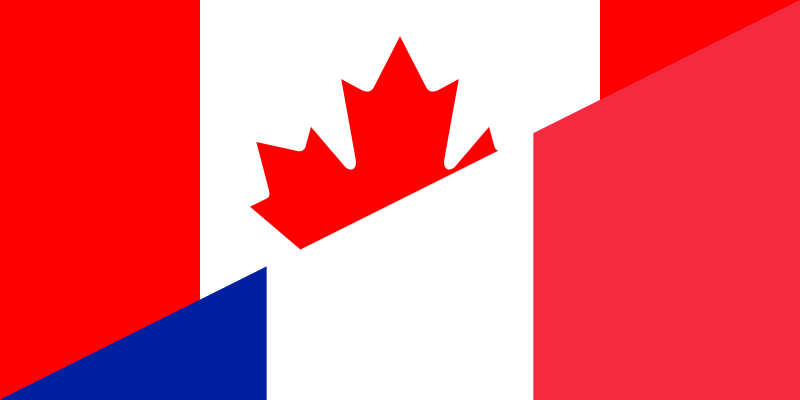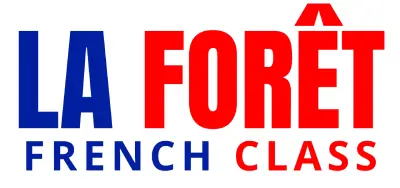Canada, a land of vast landscapes and diverse cultures, boasts a unique linguistic identity where English and French are the two official languages. English holds the majority, but French plays a significant role. Let’s find out what parts of Canada speak French. Are you ready to dive in?


Overview of the French Language in Canada
The French language is woven into the very fabric of Canadian society, standing proudly as one of the country’s two official languages. With over 10 million Canadians speaking French as their mother tongue, it’s clear that French is much more than just a second language—it’s a living, breathing part of daily life for millions. Nowhere is this more evident than in Quebec, where French is the sole official language and over 75% of Quebecers speak French as their first language.
But the French language’s influence doesn’t stop at Quebec’s borders. Significant French-speaking populations thrive in New Brunswick—the only officially bilingual province—as well as in Ontario, the Atlantic provinces, and other provinces across the country. These communities, rooted in the legacy of early French settlers in British North America, continue to keep the language vibrant and relevant today.
Quebec: Canada’s Only French Province
Quebec, the largest province in Canada, is also the heartland of Francophone culture. Quebec is the only French province in Canada, where French is the only official language and the only province with this status. Quebec isn’t just a place where French is spoken; it’s a place where French lives. From the cobblestone streets of Old Quebec, steeped in history, to the modern-day media landscape, French is the heartbeat of this province. Politically, French is the language of government, a testament to the province’s deep-rooted Francophone identity.
With over 80% of the population identifying as French-speaking, French is the majority language in Quebec, distinguishing it from other provinces. Quebec stands as a vibrant bastion of Francophone culture in North America!
New Brunswick
New Brunswick, the only official bilingual province, stands as a testament to Canada’s linguistic commitment. New Brunswick isn’t just bilingual, it is a harmonious blend of English and French cultures. The province is home to both francophone and anglophone communities, whose coexistence shapes its unique identity. This unique province is where the two languages intertwine, creating a vibrant tapestry of linguistic diversity.
From the bustling streets of Moncton to the serene shores of the Bay of Fundy, French and English speakers live side-by-side, enriching the local fabric. Here, bilingualism is a way of life. Schools embrace both languages, teaching students to navigate seamlessly between the two. In addition to French and English, a variety of other languages are spoken in New Brunswick, reflecting the province’s multiculturalism and the many languages spoken by its residents. Businesses often cater to both English and French-speaking customers, reflecting the province’s linguistic balance.
Other Francophone Communities Across Canada
1. Ontario
While English may be the dominant language in Ontario, the province is home to a vibrant network of Francophone communities, each with its own unique character and history. Across Canadian provinces, French speakers make up a significant part of the population, and approximately 22% of the Canadian population speaks French as a first language.
The city’s streets teem with French and English graffiti and signs, and both languages are spoken in government offices, schools, and businesses. Ottawa’s Francophone community is active and engaged, organizing cultural events, festivals, and social gatherings. For those looking to improve their language skills, there are excellent French classes in Ottawa.
Ontario offers specific immigration streams for French speakers, making it an attractive destination for francophone immigrants. The province also supports welcoming francophone communities, which help newcomers integrate and thrive.
2. Manitoba
Did you know that Manitoba, a province often associated with prairies and wheat fields, hides a vibrant Francophone history?! Well, the city of St. Boniface, nestled within Winnipeg, stands as a testament to this legacy.
Founded in 1818, St. Boniface was once the heart of French-speaking settlement in Western Canada. Today, St. Boniface remains a cultural hub, where French traditions and language thrive. The community organizes lively festivals like the Festival du Voyageur, a celebration of Métis heritage and French Canadian culture.
Francophone immigrants have played a key role in shaping Manitoba’s French-speaking community, contributing to its growth and diversity. While Manitoba’s Francophone population may be smaller than in Québec or New Brunswick, its history and resilience are absolutely undeniable.
3. Alberta and British Columbia
While traditionally more associated with English-speaking populations, Alberta and British Columbia are witnessing a growing presence of Francophone communities! Exciting, right?!
Edmonton, Alberta’s capital, has seen a notable increase in French-speaking residents, drawn by the province’s economic opportunities and vibrant cultural scene. Vancouver, British Columbia’s largest city, is also home to a thriving Francophone community. French-language schools, cultural centers, and community organizations have sprung up to cater to the needs of this growing demographic.
French-speaking communities are also present in Nova Scotia and Prince Edward Island, playing an important role in the broader French-language presence in Atlantic Canada.
Montreal: Canada’s French Quarter
Where even the birds speak French!
Think of a city known for its bagels, jazz, and a unique blend of European and North American architecture. What comes to mind? Well, it’s none other than Montreal!
Montreal, the most populous city in Quebec and the second largest city in Canada, is a Francophone cultural powerhouse and a major destination for French speakers.
From the cobblestone streets of Old Montreal, steeped in history, to the vibrant arts scene that thrives in the Plateau Mont-Royal neighborhood, this city pulsates with French creativity and established music. Montreal is renowned for hosting international events, further cementing its reputation as a global cultural hub. Furthermore, with over 60% of its residents speaking French, Montreal offers an immersive Francophone experience.
Furthermore, Montreal is also a foodie’s paradise, offering a delectable array of French-inspired cuisine. From classic poutine to gourmet bistros, there’s something to satisfy every palate. And let’s not forget about the city’s stunning architecture, which blends European influences with North American practicality, creating a unique and visually striking cityscape!
Government Support and Services for Francophone Communities
Supporting French-speaking communities is a top priority for the Government of Canada, reflecting the country’s commitment to its official languages. The federal government has put in place a range of initiatives to ensure that francophone minority communities across the provinces and territories can thrive. For example, specific immigration programs like the Express Entry system are designed to attract French-speaking immigrants, helping to grow and strengthen francophone populations from coast to coast.
The Canadian Heritage department plays a central role in promoting francophone culture and language, working closely with both provincial and territorial governments to support the growth of French-speaking communities. Thanks to language legislation such as the Canadian Charter and the Official Languages Act, French and English enjoy equal status as official languages, ensuring that government services are accessible in both languages for all Canadians.
The Influence of French on Immigration in Canada
Dreaming of becoming a Canadian resident? Well, French fluency, particularly in Quebec, can give your PR application a serious boost. Think of it like a golden ticket to a land of maple syrup, poutine, and a vibrant bilingual culture.
Canada also places a strong emphasis on francophone immigration, offering unique opportunities for French-speaking immigrants, especially in provinces like New Brunswick and other regions with thriving francophone communities.
But why? Well, Quebec cherishes its French heritage, and French-speaking immigrants are seen as guardians of this cherished language. Besides, Canada is a mosaic of cultures, and French adds a beautiful, shimmering tile to the picture.
Want to unlock your inner Francophone and increase your PR chances? La Forêt French Class can be your springboard!
Did You know?
- The French-speaking region of Canada is often referred to as La Francophonie canadienne.
- While poutine is now considered a quintessential Canadian dish, its exact origins are debated. Some believe it originated in Quebec, while others claim it has roots in French cuisine.
Frequently Asked Questions
- What is the largest French-speaking province in Canada?
Quebec is the largest French-speaking province, with over 80% of its population identifying as French-speaking. Isn’t that cool?
- What is the difference between French-speaking Canadians and Québécois?
While all Québécois are French-speaking Canadians, not all French-speaking Canadians are Québécois! The term “Québécois” specifically refers to people who live in the province of Quebec. There are also French-speaking communities in other provinces, such as New Brunswick, Ontario, and Manitoba!





